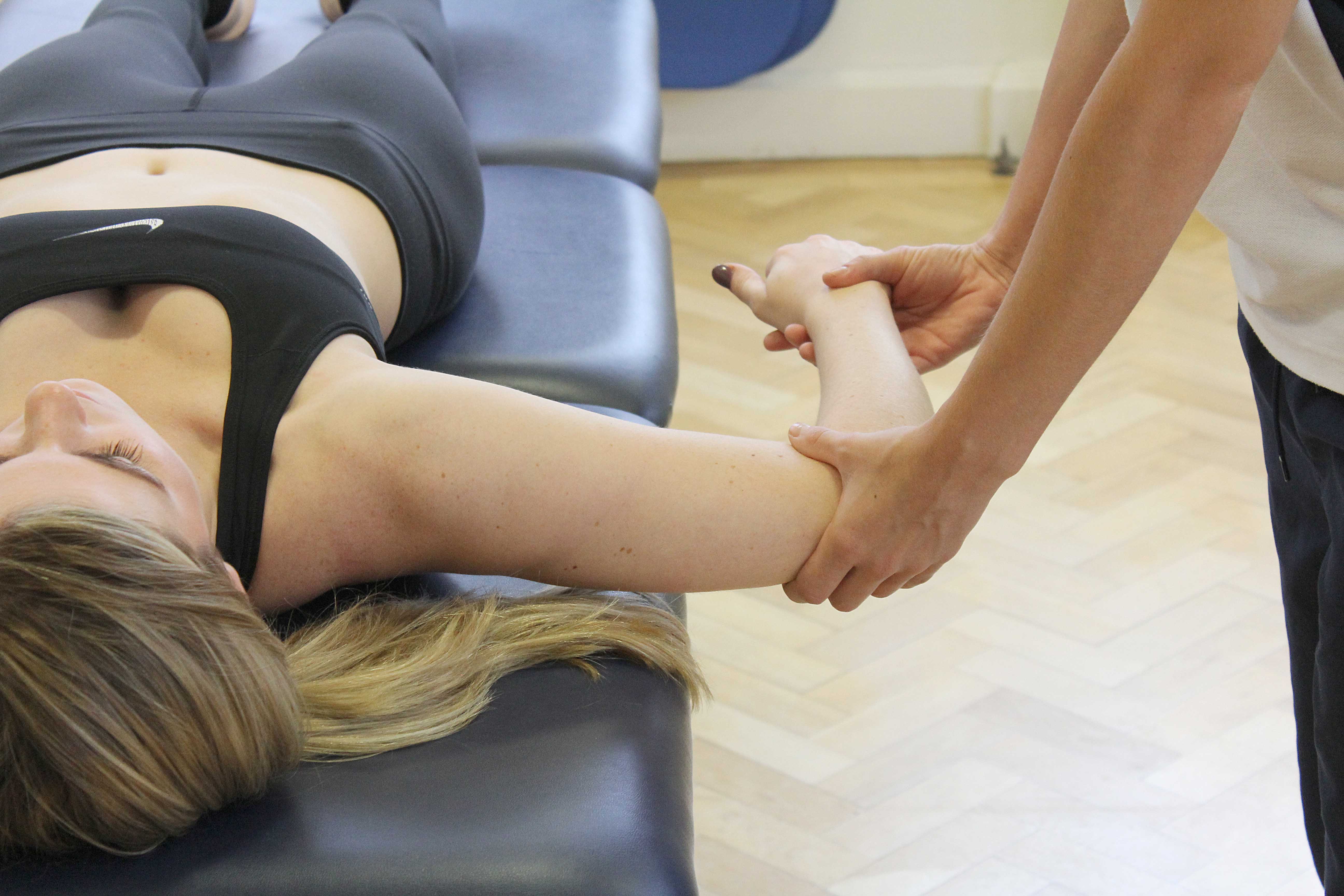What is parsonage-turner syndrome?
Parsonage-turner syndrome is pain around the affected shoulder followed by weakness of the shoulder. It is quite a rare condition and consequently it is often misdiagnosed.
What causes parsonage-turner syndrome?
Parsonage-turner syndrome is caused by inflammation of the brachial plexus which is a large group of nerves in the shoulder. The cause of this inflammation is unknown.
What are the symptoms of parsonage-turner syndrome?
Parsonage-turner syndrome has a sudden onset of pain across the top of the scapula (shoulder blade) which can also radiate into the upper arm. After several hours or days the shoulder and upper arm may become weak and, in severe cases, the muscles may become paralysed.
 Above: Passive stretch exercises conducted bt physiotherapist for the glenohumaral joint.
Above: Passive stretch exercises conducted bt physiotherapist for the glenohumaral joint.Physiotherapy for parsonage-turner syndrome
There is no form of treatment which has been proven to be the most effective. Physiotherapy can be beneficial though and this is something that our physiotherapists can treat at Physio.co.uk. Physiotherapy is aimed at finding the most effective treatment for the individual. Treatment may include:
- Hot / cold therapy
- Electrotherapy
- Mobilisation
- Range of movement exercises
- Stretching exercises
- Strengthening exercises
- Practice of functional activities
- Advice on positioning and activity
Can parsonage-turner syndrome cause any long-term effects?
A full recovery is usually made but it can take anything between months and years depending on the individual. It is possible that a relapse can occur, even after making a full recovery, but this is uncommon. A full recovery of strength and function can usually be made.
To arrange an assessment with Physio.co.uk please contact us or call 0330 088 7800.

 0330 088 7800
0330 088 7800


































